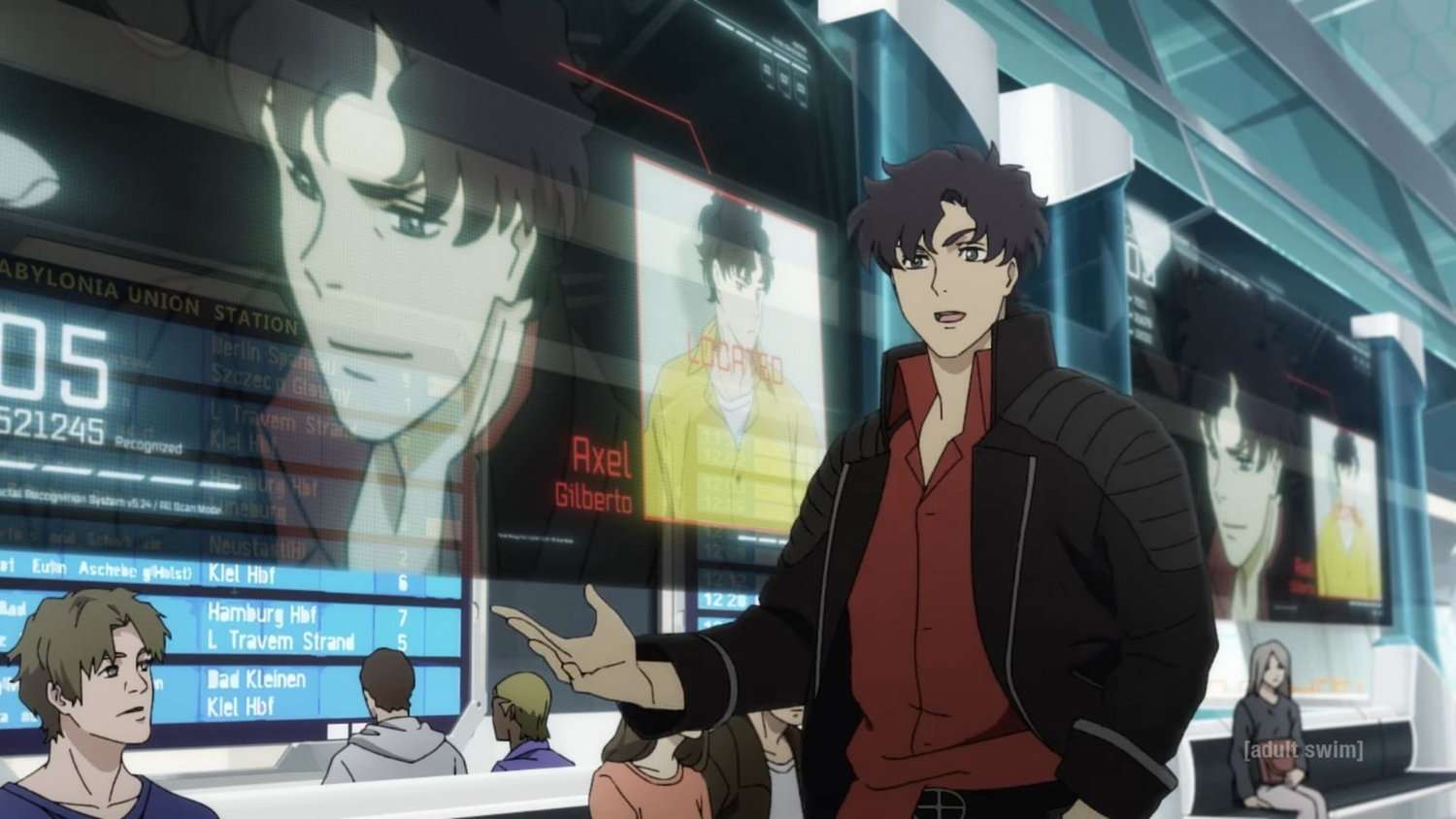Shinichirō Watanabe’s “Cowboy Bebop” was a lightning-in-a-bottle phenomenon. It is an artistic high that we keep chasing despite being painfully aware that it cannot be replicated — and arguably, it shouldn’t be. Everything else that Watanabe has lovingly crafted since then — “Samurai Champloo,” “Space Dandy,” “Carole & Tuesday” — contains slivers of this inimitable brilliance, encased with the passionate dedication of a seasoned auteur.
His latest, “Lazarus,” embraces the signature impulses of his ouevre: a deep love for a rich, diverse futuristic setting, a rag-tag group of misfits embarking on thrilling adventures, and an uncompromising vision concerning humanity. Although critics have only been privy to 5 of the 13 episodes that “Lazarus” has to offer, they paint a groovy, highly-stylized picture of a world on the brink of extinction. There’s a frenetic “Bebop”-esque sensibility that feels so familiar, yet “Lazarus” etches its own identity and stands on its distinct merits.
Right of the bat, “Lazarus” is beautiful to look at. Animation studio MAPPA (which has produced everything from “Yuri!!! on Ice” to the ongoing “Jujutsu Kaisen”) fleshes out a snazzy, vibrant world set in the 2050s, where technology looks fluid enough to convey that humans are on the edge of progress, right on the cusp of something transcendent. This era-defining belief is solidified with the advent of Hapna, a revolutionary pain-killer with no purported side-effects, created by the gifted Dr. Skinner.

Hapna’s status as a miracle drug is legit despite feeling too good to be true: it becomes a lifeline for those with chronic pain and also those without, as Hapna evolved into a conduit for escaping mundane drudgery. That is, until Skinner returns with an ominous video warning after disappearing off the face of the Earth: Hapna mutates inside the human body, and every person who has ever taken it is going to die in 30 days.
There’s nothing novel or deeply intriguing about the world-ending lore that “Lazarus” cooks up. Humanity’s response to this threat isn’t groundbreaking either: a group of social outlaws come together to tackle an impossible challenge, working against all odds to defuse a ticking time bomb, which, in this case, is the end of humanity. Axel, our hyperactive yet effortlessly chill protagonist, flies off high vantage points without a care in the world, almost cockily self-assured that he is going to land on his feet without any broken bones. And he does, thanks to a delightful combination of Watanabe’s penchant for writing larger-than-life characters and Chad Stahelski’s dynamic action sequences that mimic a violent dance. Even though we know next to nothing about Axel five episodes in, his aerodynamic proclivities are distracting enough to keep us sated.
That said, “Lazarus” does have a story problem. The grander implications of Skinner’s ultimatum feel rather empty despite the anime’s breakneck approach to tackling this central problem, where the group flies from one location to the next to solve the mindboggling enigma that Skinner is. A lot of things happen: elaborate traps are laid to lure in our elusive target, undercover missions devolve into an unforgettable night of exposés and shoot-outs, and our Lazarus team take some detours that allow them to develop a more personal bond with one another.
Despite everything, the show’s thematic fabric feels sparse, as most of the story beats feel muddled and uninspired. Yes, it’s cool to see Axel and co. are staking out an area for increasingly convoluted clues, where reveal A leads to reveal B (and inadvertently exposes C!), but none of that feels more interesting than the aesthetic fluidity inherent in these scenes.

There’s also the uneven voice work, which is wonky enough to create a dissonance between what’s happening onscreen and the effect it should have on our minds. The incredibly talented cast is not to blame here, as the issue lies more with the narrative’s English localization, where most of the dialogue fails to stick the landing or isn’t as hard-hitting as it should have been. This glaring problem does ease with time, as character dialogue undoubtedly feels more in sync with the worldbuilding by the third episode, taking things up a notch when least expected after this turning point.
In any other creative venture, such foundational flaws might’ve been enough to nudge it toward underhwhelming genrefare, but “Lazarus” shatters conventions due to specific reasons. For one, Watanabe’s breathtaking artistry and grasp over sweeping worldbuilding alone makes the show worth your time, as these futuristic cities feel like a natural extension of the present. While “Bebop” leaned into an anachronistic yet functional marriage between space western and dystopian noir, “Lazarus” feels like a nostalgic window into the near future. If that sounds like an oxymoron, it is because it is: “Lazarus” embodies nostalgia for a time that we haven’t experienced yet, a time that is both distant yet comforting, frightening yet exhilarating.
Although “Lazarus” might need some more time to find its narrative footing and reinvent its thematic clichés, the Adult Swim anime is an exuberantly sleek artistic feat that embodies Watanabe’s strengths as a visual storyteller.









